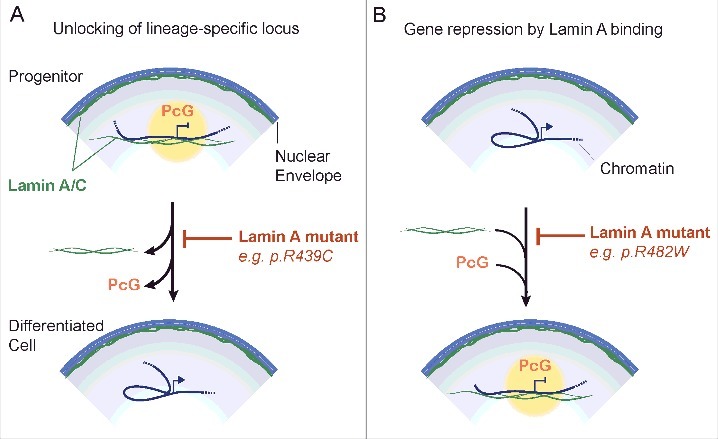Figure 3.

Connecting lamin A mutations, Polycomb and local genome conformation to developmental gene expression. (A) Unlocking of a lineage-specific gene from lamin A. In progenitor cells, a locus is held in a repressed state by Polycomb proteins (PcG) stabilized intranuclear lamin A/C. Dissociation of lamin A/C from the locus upon differentiation favors release of Polycomb, promoter-enhancer interaction and transcriptional activation of the locus. Some lamin A mutants such as lamin A p.R439C [72] enhance lamin A binding to chromatin and would inhibit this process. (B) Conversely, a gene active in progenitor cells is repressed by Polycomb on differentiation. This is enabled by an intranuclear lamin A network which stabilizes Polycomb at the locus. An example is the MIR335 gene in adipocyte progenitors [22]. The lamin A p.R482W mutant prevents lamin A binding, Polycomb recruitment and transcriptional repression.
